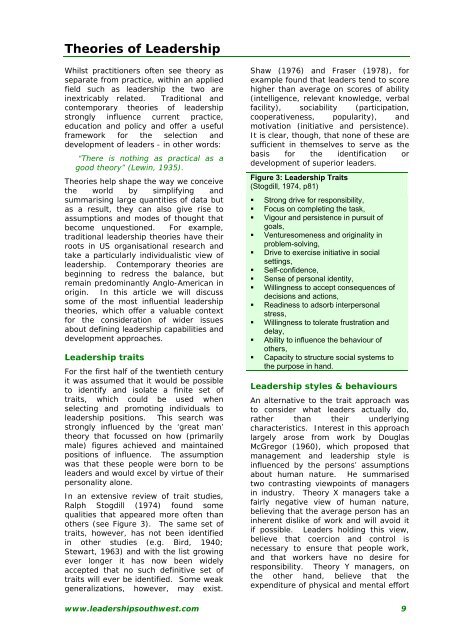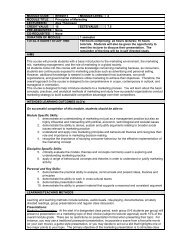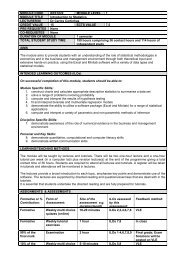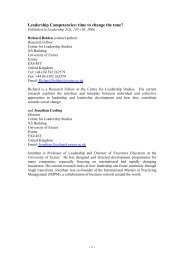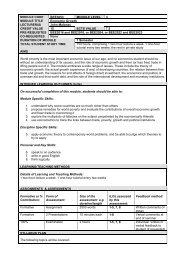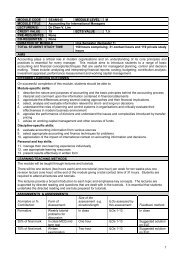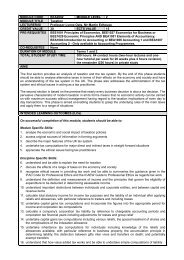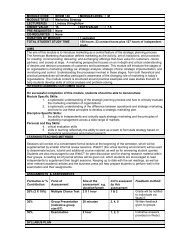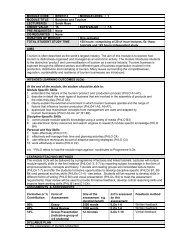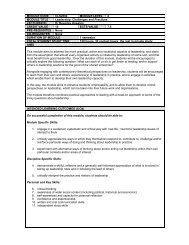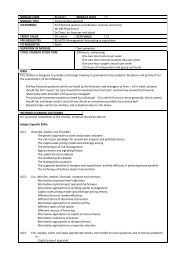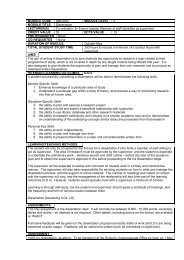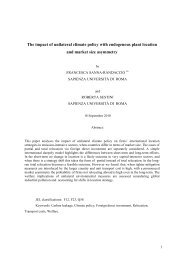What is Leadership? - The Business School - University of Exeter
What is Leadership? - The Business School - University of Exeter
What is Leadership? - The Business School - University of Exeter
You also want an ePaper? Increase the reach of your titles
YUMPU automatically turns print PDFs into web optimized ePapers that Google loves.
<strong>The</strong>ories <strong>of</strong> <strong>Leadership</strong><br />
Whilst practitioners <strong>of</strong>ten see theory as<br />
separate from practice, within an applied<br />
field such as leadership the two are<br />
inextricably related. Traditional and<br />
contemporary theories <strong>of</strong> leadership<br />
strongly influence current practice,<br />
education and policy and <strong>of</strong>fer a useful<br />
framework for the selection and<br />
development <strong>of</strong> leaders - in other words:<br />
“<strong>The</strong>re <strong>is</strong> nothing as practical as a<br />
good theory” (Lewin, 1935).<br />
<strong>The</strong>ories help shape the way we conceive<br />
the world by simplifying and<br />
summar<strong>is</strong>ing large quantities <strong>of</strong> data but<br />
as a result, they can also give r<strong>is</strong>e to<br />
assumptions and modes <strong>of</strong> thought that<br />
become unquestioned. For example,<br />
traditional leadership theories have their<br />
roots in US organ<strong>is</strong>ational research and<br />
take a particularly individual<strong>is</strong>tic view <strong>of</strong><br />
leadership. Contemporary theories are<br />
beginning to redress the balance, but<br />
remain predominantly Anglo-American in<br />
origin. In th<strong>is</strong> article we will d<strong>is</strong>cuss<br />
some <strong>of</strong> the most influential leadership<br />
theories, which <strong>of</strong>fer a valuable context<br />
for the consideration <strong>of</strong> wider <strong>is</strong>sues<br />
about defining leadership capabilities and<br />
development approaches.<br />
<strong>Leadership</strong> traits<br />
For the first half <strong>of</strong> the twentieth century<br />
it was assumed that it would be possible<br />
to identify and <strong>is</strong>olate a finite set <strong>of</strong><br />
traits, which could be used when<br />
selecting and promoting individuals to<br />
leadership positions. Th<strong>is</strong> search was<br />
strongly influenced by the ‘great man’<br />
theory that focussed on how (primarily<br />
male) figures achieved and maintained<br />
positions <strong>of</strong> influence. <strong>The</strong> assumption<br />
was that these people were born to be<br />
leaders and would excel by virtue <strong>of</strong> their<br />
personality alone.<br />
In an extensive review <strong>of</strong> trait studies,<br />
Ralph Stogdill (1974) found some<br />
qualities that appeared more <strong>of</strong>ten than<br />
others (see Figure 3). <strong>The</strong> same set <strong>of</strong><br />
traits, however, has not been identified<br />
in other studies (e.g. Bird, 1940;<br />
Stewart, 1963) and with the l<strong>is</strong>t growing<br />
ever longer it has now been widely<br />
accepted that no such definitive set <strong>of</strong><br />
traits will ever be identified. Some weak<br />
generalizations, however, may ex<strong>is</strong>t.<br />
Shaw (1976) and Fraser (1978), for<br />
example found that leaders tend to score<br />
higher than average on scores <strong>of</strong> ability<br />
(intelligence, relevant knowledge, verbal<br />
facility), sociability (participation,<br />
cooperativeness, popularity), and<br />
motivation (initiative and pers<strong>is</strong>tence).<br />
It <strong>is</strong> clear, though, that none <strong>of</strong> these are<br />
sufficient in themselves to serve as the<br />
bas<strong>is</strong> for the identification or<br />
development <strong>of</strong> superior leaders.<br />
Figure 3: <strong>Leadership</strong> Traits<br />
(Stogdill, 1974, p81)<br />
Strong drive for responsibility,<br />
Focus on completing the task,<br />
Vigour and pers<strong>is</strong>tence in pursuit <strong>of</strong><br />
goals,<br />
Venturesomeness and originality in<br />
problem-solving,<br />
Drive to exerc<strong>is</strong>e initiative in social<br />
settings,<br />
Self-confidence,<br />
Sense <strong>of</strong> personal identity,<br />
Willingness to accept consequences <strong>of</strong><br />
dec<strong>is</strong>ions and actions,<br />
Readiness to adsorb interpersonal<br />
stress,<br />
Willingness to tolerate frustration and<br />
delay,<br />
Ability to influence the behaviour <strong>of</strong><br />
others,<br />
Capacity to structure social systems to<br />
the purpose in hand.<br />
<strong>Leadership</strong> styles & behaviours<br />
An alternative to the trait approach was<br />
to consider what leaders actually do,<br />
rather than their underlying<br />
character<strong>is</strong>tics. Interest in th<strong>is</strong> approach<br />
largely arose from work by Douglas<br />
McGregor (1960), which proposed that<br />
management and leadership style <strong>is</strong><br />
influenced by the persons’ assumptions<br />
about human nature. He summar<strong>is</strong>ed<br />
two contrasting viewpoints <strong>of</strong> managers<br />
in industry. <strong>The</strong>ory X managers take a<br />
fairly negative view <strong>of</strong> human nature,<br />
believing that the average person has an<br />
inherent d<strong>is</strong>like <strong>of</strong> work and will avoid it<br />
if possible. Leaders holding th<strong>is</strong> view,<br />
believe that coercion and control <strong>is</strong><br />
necessary to ensure that people work,<br />
and that workers have no desire for<br />
responsibility. <strong>The</strong>ory Y managers, on<br />
the other hand, believe that the<br />
expenditure <strong>of</strong> physical and mental effort<br />
www.leadershipsouthwest.com 9


